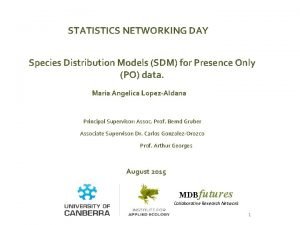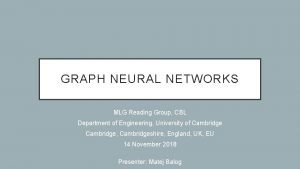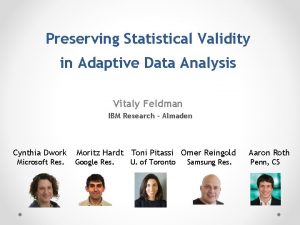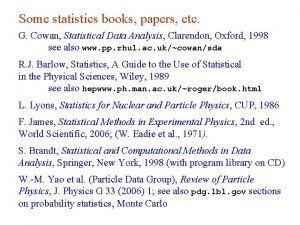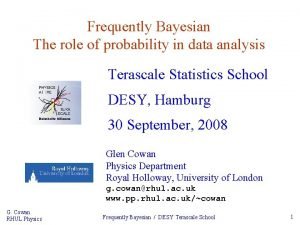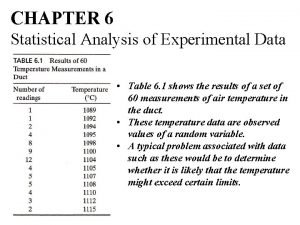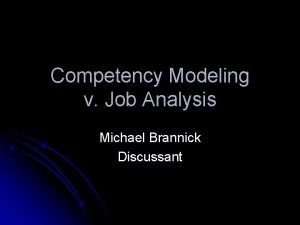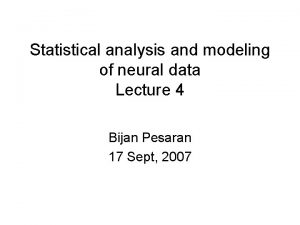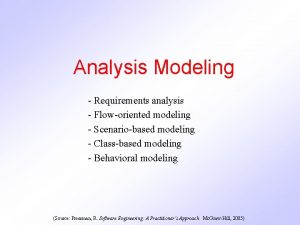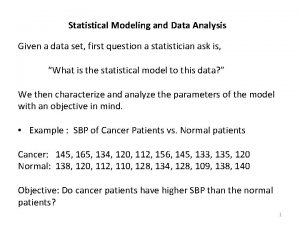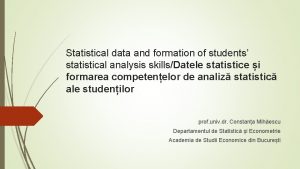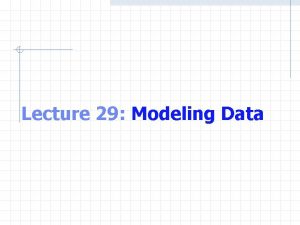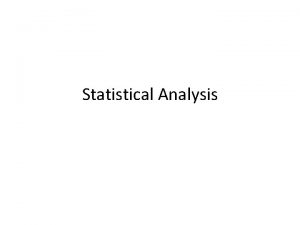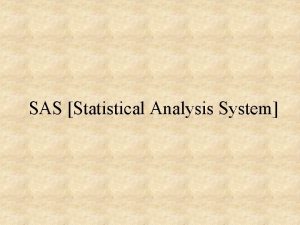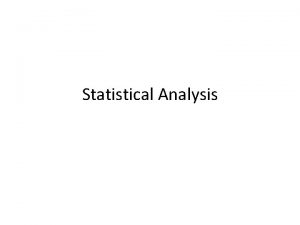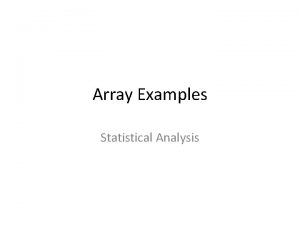Statistical analysis and modeling of neural data Lecture

















- Slides: 17

Statistical analysis and modeling of neural data Lecture 5 Bijan Pesaran 19 Sept, 2007

Goals • Recap last lecture – review Poisson process • Give some point process examples to illustrate concepts. • Characterize measures of association between observed sequences of events.

Poisson process

Renewal process • Independent intervals • Completely specified by interspike interval density • Convolution to get spike counts

Characterization of renewal process • Parametric: Model ISI density. – Choose density function, Gamma distribution: – Maximize likelihood of data No closed form. Use numerical procedure.

Characterization of renewal process • Non-parametric: Estimate ISI density – Select density estimator – Select smoothing parameter

Non-stationary Poisson process – Intensity function

Conditional intensity function

Measures of association • Conditional probability • Auto-correlation and cross correlation • Spectrum and coherency • Joint peri-stimulus time histogram

Cross intensity function

Cross-correlation function

Limitations of correlation • It is dimensional so its value depends on the units of measurement, number of events, binning. • It is not bounded, so no value indicates perfect linear relationship. • Statistical analysis assumes independent bins

Scaled correlation • This has no formal statistical interpretation!

Corrections to simple correlation • Covariations from response dynamics • Covariations from response latency • Covariations from response amplitude

Response dynamics • Shuffle corrected or shift predictor

Joint PSTH

Questions • Is association result of direct connection or common input • Is strength of association dependent on other inputs
 Erickson nursing theory
Erickson nursing theory Sdm species distribution model
Sdm species distribution model Relational vs dimensional data modeling
Relational vs dimensional data modeling Graph neural network lecture
Graph neural network lecture Preserving statistical validity in adaptive data analysis
Preserving statistical validity in adaptive data analysis Cowan statistical data analysis pdf
Cowan statistical data analysis pdf State bayes theorem
State bayes theorem Statistical analysis of experimental data
Statistical analysis of experimental data 01:640:244 lecture notes - lecture 15: plat, idah, farad
01:640:244 lecture notes - lecture 15: plat, idah, farad Best practice etl architecture
Best practice etl architecture Exploratory data analysis lecture notes
Exploratory data analysis lecture notes Decision trees show the logic structure in a
Decision trees show the logic structure in a Describe data and process modeling concepts and tools
Describe data and process modeling concepts and tools Simulation kelton
Simulation kelton Answers key
Answers key Requirements modeling in system analysis and design
Requirements modeling in system analysis and design Competency modeling vs job analysis
Competency modeling vs job analysis Manufacturing systems modeling and analysis
Manufacturing systems modeling and analysis

